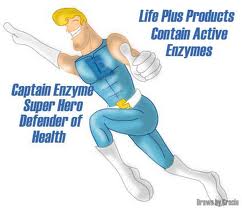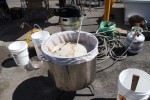 Science strikes again! For no particular reason, let’s talk about mashing today. As with many of the topics that show up in these articles, there will have to be some constraints on discussion in order to fit in the space allotted. We will focus on two major components of the mash: the mechanics, and the enzymatic activity. In an attempt to make this a practically applicable discussion, I also will focus almost entirely on issues that actually face a modern brewer. I’m sure there are some traditionalists who would string me up for utterly discarding decoction mashing as a viable procedure, and some scientists may take issue with my complete avoidance of discussing phosphatase, cytolytic enzymes, or protein degradation. If you are one of those people, feel free to use this as a starting point in your own research. Fix’s Principles of Brewing Science is an excellent resource for more detail on the enzyme side of things, and any number of online website can bore you for days about the arcane practice of decoction. Now, shall we begin?
Science strikes again! For no particular reason, let’s talk about mashing today. As with many of the topics that show up in these articles, there will have to be some constraints on discussion in order to fit in the space allotted. We will focus on two major components of the mash: the mechanics, and the enzymatic activity. In an attempt to make this a practically applicable discussion, I also will focus almost entirely on issues that actually face a modern brewer. I’m sure there are some traditionalists who would string me up for utterly discarding decoction mashing as a viable procedure, and some scientists may take issue with my complete avoidance of discussing phosphatase, cytolytic enzymes, or protein degradation. If you are one of those people, feel free to use this as a starting point in your own research. Fix’s Principles of Brewing Science is an excellent resource for more detail on the enzyme side of things, and any number of online website can bore you for days about the arcane practice of decoction. Now, shall we begin?
A modern commercial brewer will begin a brew with a quantity of malted grain and a volume of hot water. The grains are usually all or mostly all barley, but many brewers also implement a portion of wheat, rye, corn, oats, or any number of other grains. There are some very skilled maltsters out there who have started producing malted, flaked, or otherwise readily mashable versions of these products, so we will pass over the common protests against their viability. Barley itself is also much more well handled at the malting level these days, so the need to spend much, if any, energy on breaking proteins, building diastatic power, or degrading cell walls can be passed over in all but the most extreme cases. Thanks maltsters!
Once milled, the grain is then mixed in some fashion or another with the aforementioned hot water. The particular characteristics of this water are extremely important, but they apply mostly to the enzymatic portion of this discussion, so we’ll hold off for now. Once the crushed grains and hot water are combined, the resulting porridge-y blend is called the mash. This mash must be adequately mixed in order to achieve a homogenous mash free of dough balls. Homogeneity is important to ensure that all of the grains contribute to the flavor of the wort in accordance with their proportions in the grist bill. Dough balls, or clumps of grain, are to be avoided because extraction can only occur in the presence of water, and the dry surfaces on the inside of a dough ball will be wasted. Once a proper mash is achieved, the enzymatic activity takes place, and we move on with the mechanics.
A recirculation, or vorlauf, is performed in which liquid is pulled from the bottom of the lauter tun and sprayed back onto the top of the mash. This process is meant to “set” the grain bed. By creating a gentle suction at the bottom of the mass of wet grain, the solids settle to the bottom of the mash forming, in theory, a sort of filter for themselves. Because the husks of barley are not removed before mashing, they create a kind of filter that allows the wort to pass through the bottom without pulling large bits of grain solids along with it. After a certain degree of clarity is achieved in the runoff, the wort being pulled off the bottom is then directed, rather than back onto the mash, into a wort containment vessel, which is usually the boil kettle. Hot(ter) water is then sprayed onto the grain bed in a process called sparging. This effectively ends enzymatic activity and rinses extracted sugars from the grain husks so they can be used in brewing.
Fairly simple, yes? Now let’s look at what happens at the molecular level. The lucky modern brewer usually has access to grain that has been treated extremely well in the malting phase. Because of this level of care, most of the work traditionally done by excessive step mashing is already taken care of. Messing around with more steps doesn’t really have a detrimental effect, but it is largely unnecessary. The two most pivotal enzymes in the modern mash are alpha and beta amylase. These are the little guys that will take all the long chain starches and carbohydrates in the grain and convert them into usable sugars.
Alpha amylase focuses its activity at a lower temperature range than its counterpart. This is why the temperature of the mash is extremely important. Mostly between 140F and 149F, alpha amylase will break segments of two glucose molecules off of long carbohydrates. This product is known as maltose and is the primary fermentable sugar in beer wort. Due to the high fermentability of maltose, rests at these temperatures will generally lead to thinner, more attenuated beers. The alpha activity can also occur slightly outside this temperature range but is not as significant.
Beta amylase is most active at slightly higher temperatures than alpha. Most activity will occur from 149F to 158F. This enzyme breaks long chains into larger segments of glucose molecules known as dextrines. These sugars are much less fermentable than maltose and will generally yield a fuller but less attenuated wort. When these two enzymes work together, a wort is produced that has some blend of sugars ready to become beer. The rule of thumb is that hotter mashes will be fuller bodied but less fermentable, and lower temperature mashes will be more fermentable but will have slightly less body. Additionally, these enzymes serve to liquefy many of the components of a mash in order to allow higher conversion rates for themselves and for other less important enzymes.
As the temperature rises during the sparge, which is best done with water around 165F to168F, certain head retention and body-creating proteins will be formed. As the temperature crosses 168F, most enzymes will denature and stop all their activity. Once you have drained off all the wort, your mash is complete. Congrats!
Until next time, faithful readers, thanks for reading, and happy drinks!
P.S. Remember to let me know if you have some specific topic you would like me to babble about next time. You can tell me in person, by e-mail, or in the comments right down below.





